Bar-tailed Godwit Limosa lapponica
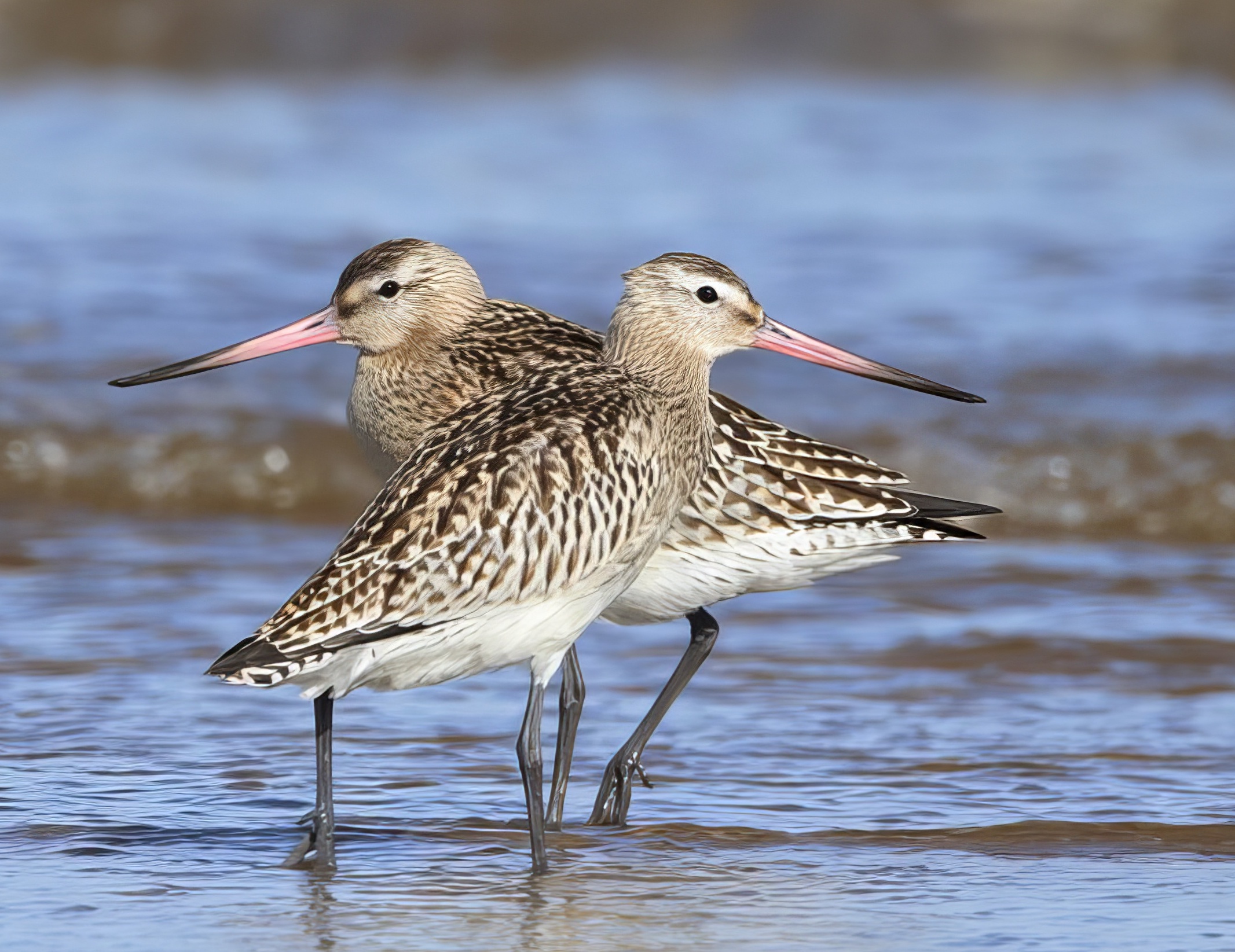
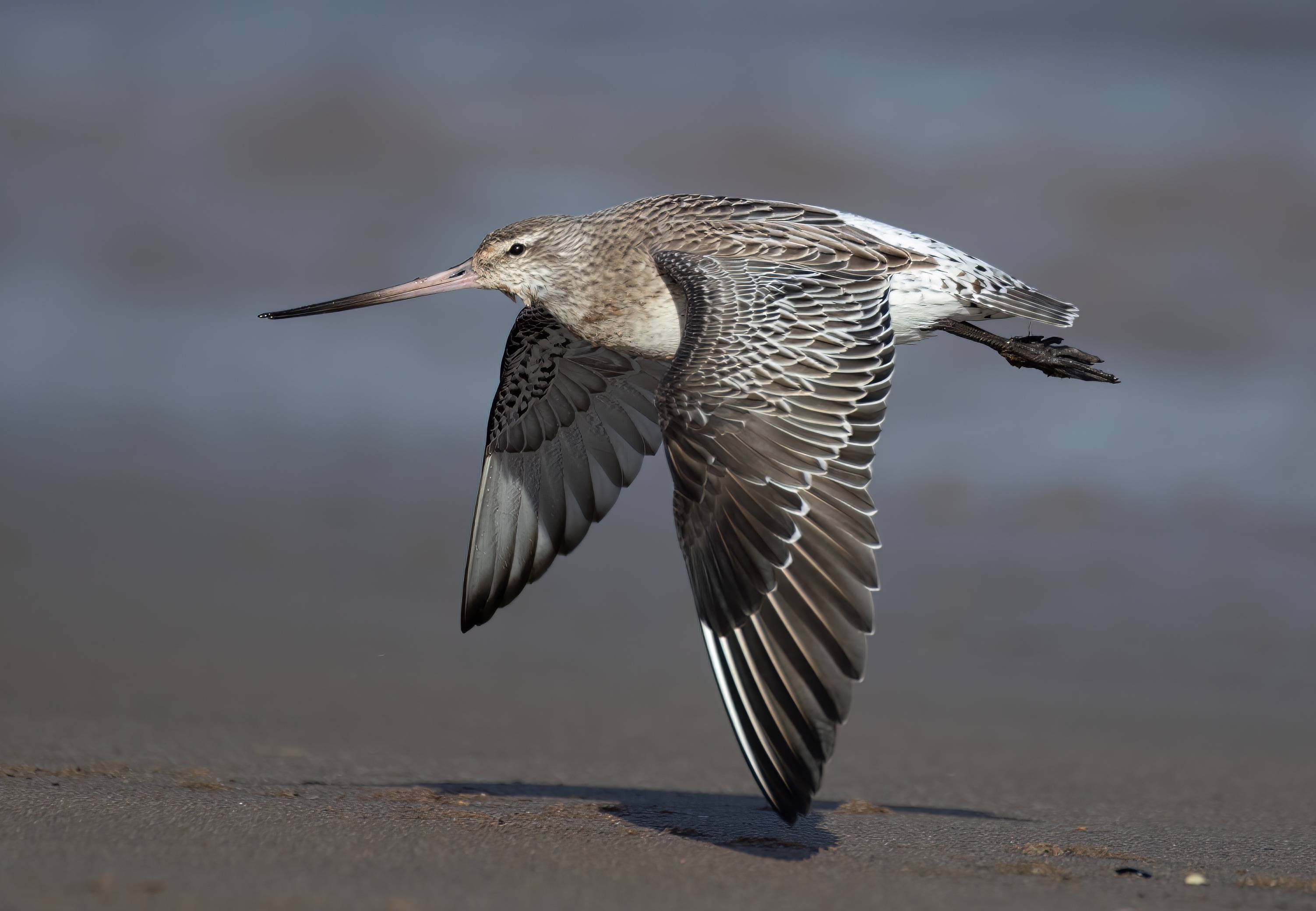
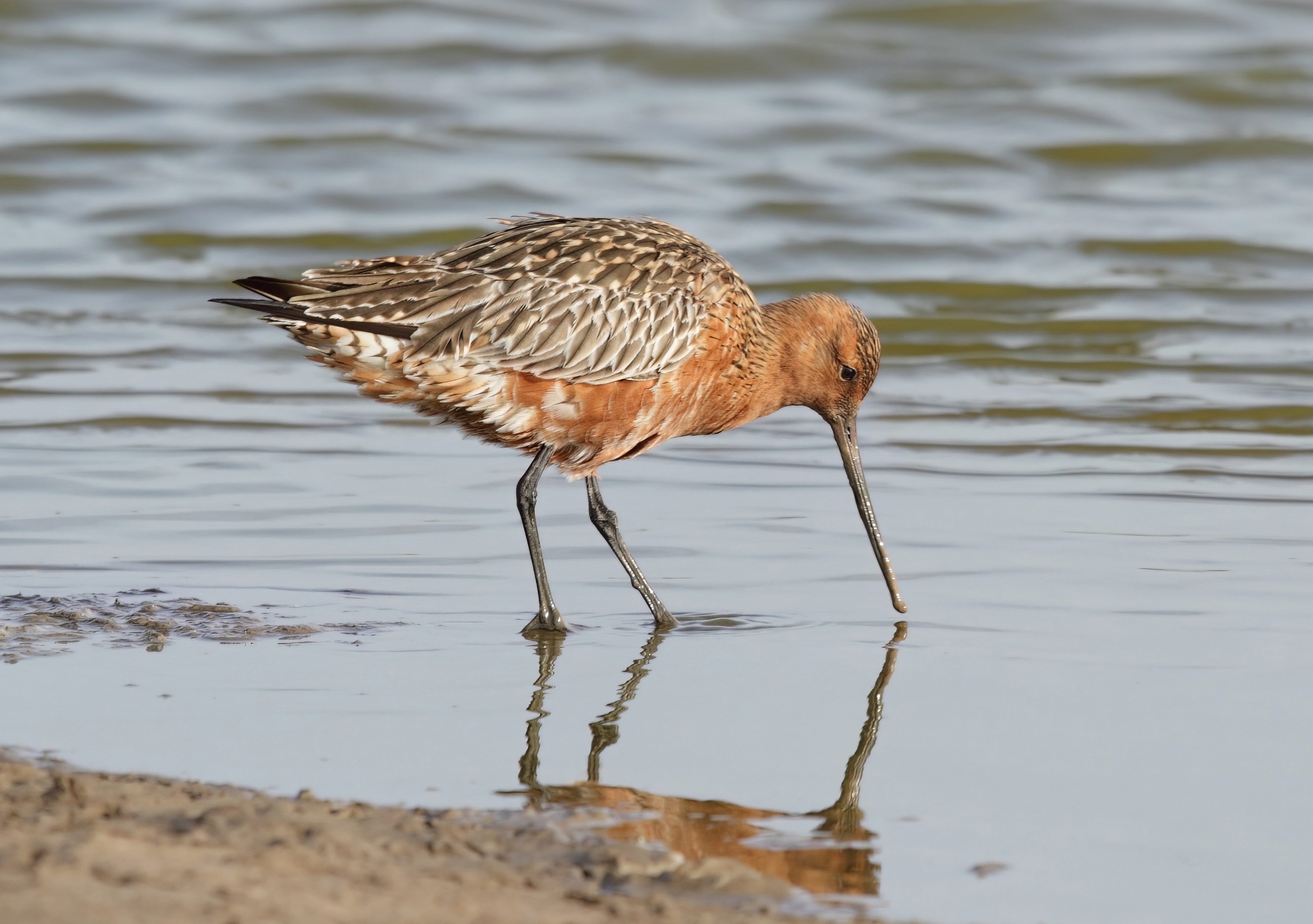
Bar-tailed Godwits wintering in Lincolnshire breed in arctic Europe and western Siberia, though some including many of the first year birds remain with us in summer. In addition, birds nesting further east in Siberia pass through Britain (especially towards the south-east) on passage to and from their wintering areas in West Africa. These patterns of movement are evident in the Lincolnshire counts as well as from the ringing data. The chart below shows 2015 counts (from WeBS and other sources) and the 2010-2014 averages from Wash WeBS counts (Lincolnshire side). Low numbers in mid-summer rise rapidly as birds arrive from the breeding grounds in late summer and early autumn. The small autumn peak reflects the through-passage of West African winterers, and totals then remain high through mid-winter until many birds move to the Wadden Sea in February-March to fatten up prior to migration to the Arctic. The return passage of West African birds takes place in late April and May but is not really noticeable here, since within Britain it is largely confined to Sussex and Kent.
The data for 2015 are illustrated here and are fairly typical in most respects. One feature though was the higher than average numbers present in January-February and December. This was evident also in 2014 and in December 2013. It is not known if it truly reflects the numbers present or perhaps an artefact of count coverage (this analysis does not take the variations in coverage into account). There was also a particularly high total in February 2010 which may have resulted from cold weather movements.
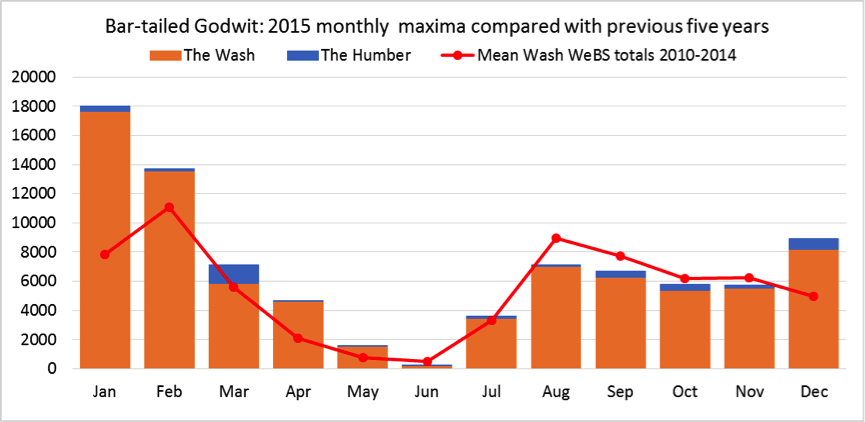
The Wash is the most important British estuary for wintering Bar-tailed Godwits and holds over 10% of the world population and is Britain's number one internationally important site; the Humber comes in at number 10. The average annual peak count between 2008/9 and 2015/16 is 17,411 birds (BTO on-line WeBS data, Frost et al, 2017). Numbers have remained remarkable stable since the mid-1990s apart from a steep drop in the mid 2000s, which has since been reversed; this may have been secondary to a poor breeding season or to cold weather movements. Data from the WeBS survey shows rolling 5-year mean counts to 2018-19 of 18,579 on The Wash and 1,331 on the Humber. For the five years to 2013-14 these figures were 16,491 and 2,097 respectively, indicating that recently the local population is fairly stable. Overall, the long-term trend shows the UK wintering population down 17%. LBR reports peak counts over the five years to 2018 from the following sites: On The Wash, 8,000 at Gibraltar Point September 2016 and 8,000 at Friskney August 2014; on the Humber 1,200 on Pyewipe Marsh, Grimsby March 2015. High August counts reflect the fact (demonstrated by ringing) that Siberian birds pass through en route to their West African wintering grounds. A large percentage of birds arriving on the Wash in autumn moult here, second-year birds starting in the first week in June and adults in the third week of July. The population takes 100–120 days to complete primary moult. Analysis of biometrics suggests that the majority of the moulting population on the Wash comes from breeding populations in northern Europe and Scandinavia, although small numbers of non-moulting birds, breeding further east, pass through in late August and early September (Atkinson 1996).
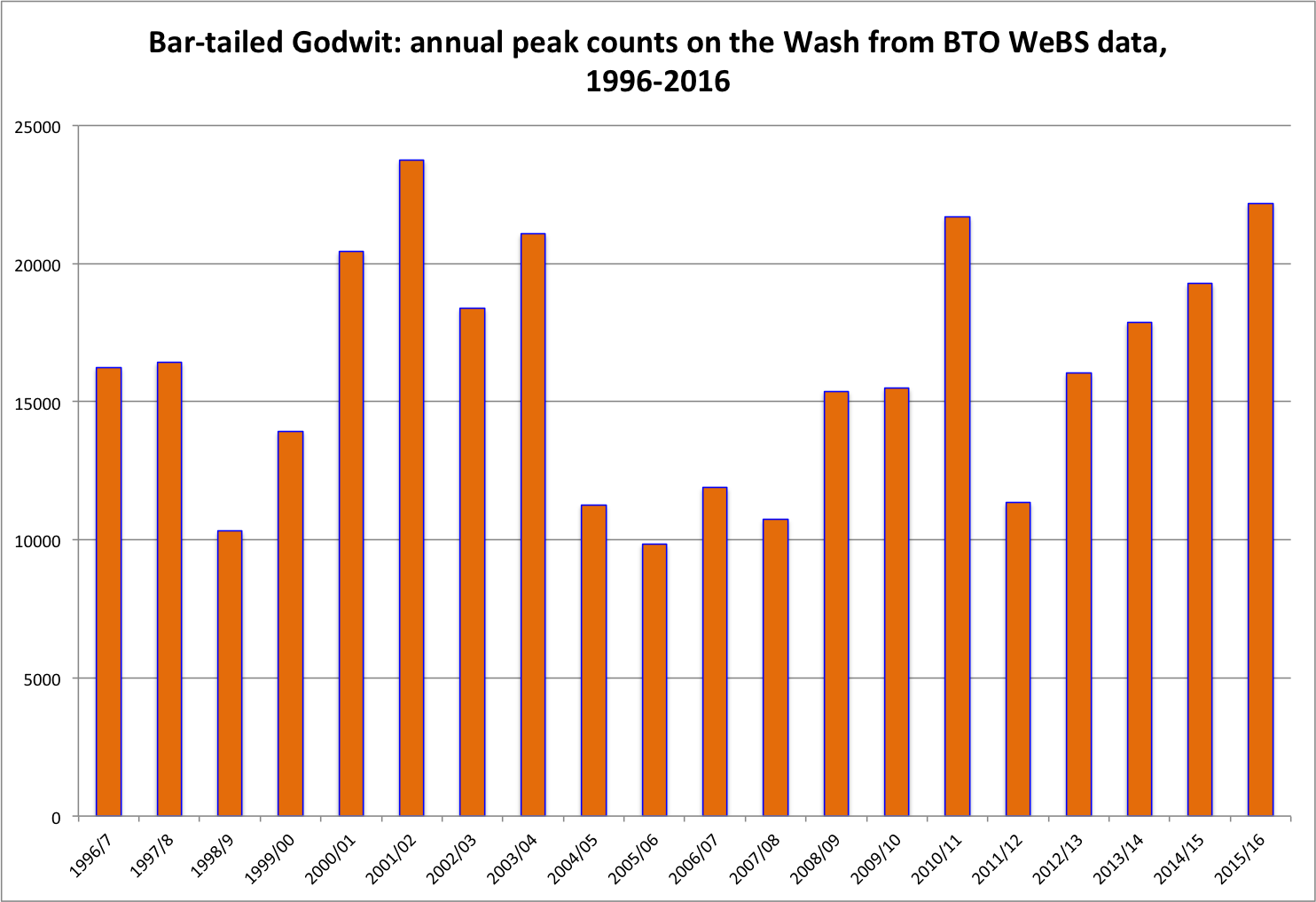
The Wash Wader Group has been responsible for most of the biometric data on Bar-tailed Godwits and for some very interesting and valuable ringing recoveries and controls. A selection of these, courtesy of BTO records, is presented here. The oldest ringed Bar-tailed Godwit was 33 years 11 months and 13 days old when trapped ringed on the Wash in Norfolk in August 2008, having been first ringed in 1974. The oldest for Lincolnshire (bird DS66532) is not too far behind this at 32 years and 18 days:
DS66532
Adult, ringed on 03-08-1973 at Friskney New Marsh: c. 53°3'N 0°13'E (Lincolnshire).
Caught by ringer on 14-08-1987 at Wainfleet Marsh: c. 53°4'N 0°17'E (Lincolnshire); 5km from ringing site 14 years and 11 days later.
Caught by ringer on 21-08-2005 at Wainfleet Marsh: 53°5'N 0°17'E (Lincolnshire); 5km from ringing site and 32 years and 18 days later.
This bird had originally been trapped as an adult and was therefore a minimum of 32 years and 18 days old, remarkable survival.
These birds are fast movers when migrating and can also cover great distances. Gill et al (2009) have provided direct evidence that Alaskan bar-tailed godwits (Limosa lapponica baueri) can fly 11,000-km on their autumn migration from Alaska to New Zealand in one eight-day step, with no stopovers to rest or refuel. No such data have been generated by the British ringing scheme to date, but there are some impressive statistics nevertheless. Foreign-ringed birds trapped in Britain have provided evidence for their likely breeding grounds, such as bird M634214:
M634214
First-year, ringed on 06-08-1987 on Great Ainov Island: 69°49'N 31°34'E (Murmansk Oblast) Russian Federation.
Caught by ringer on 30-08-1988 at Holbeach: 52°51'N 0°7'E (Lincolnshire), 2,491km SW (age 1year and 24 days).
Birds ringed in Britain and passing through en routeto West Africa have provided evidence for exactly where they end up and indeed how far they travel, such as birds DR69516 and DK57886:
DR69516
Adult, ringed on 08-09-1983 at Wrangle, Boston: 53°2'N 0°9'E (Lincolnshire).
Found freshly dead on 01-11-1983 at Cansado, Cape Blanc Peninsula: 20°51'N 17°1'W in Mauritania, 3,872km SSW
DK57886
First-year bird ringed on 21-09-2001 at Admiral's Farm, Terrington Marsh: 52°48'N 0°19'E (Norfolk).
Found freshly dead (shot) on 30-11-2006 at Ile de Bubaque, Bijagos Archipelago: 11°9'N 16°1'W in GuineaBissau, 4,858km SSW.
References
P.W.Atkinson (1996). The origins, moult, movements and changes in numbers of Bar-tailed Godwits Limosa lapponica on the Wash, England, Bird Study, 43:1, 60-72, DOI: 10.1080/00063659609460996
Frost, T.M., Austin, G.E., Calbrade, Mellan, H.J., Hearn, R.D., Stroud, D.A., Wotton, S.R. and Balmer, D.E. (2017). Waterbirds in the UK 2015/16: The Wetland Bird Survey. BTO/RSPB/JNCC. Thetford. http://www.bto.org/volunteer-surveys/webs/publications/webs-annual-report.
Gill R.E Jr, Tibbitts T.L., Douglas D.C., Handel C.M., Mulcahy D.M., et al.(2009). Extreme endurance flights by landbirds crossing the Pacific Ocean: ecological corridor rather than barrier? Proc. R. Soc. B 276: 447–457.
(Account prepared April 2018; updated with reference to the new Birds of Lincolnshire (2021), included September 2022)
